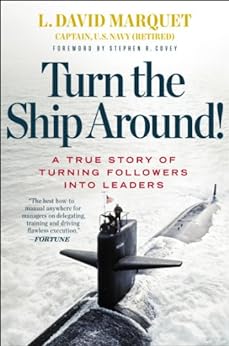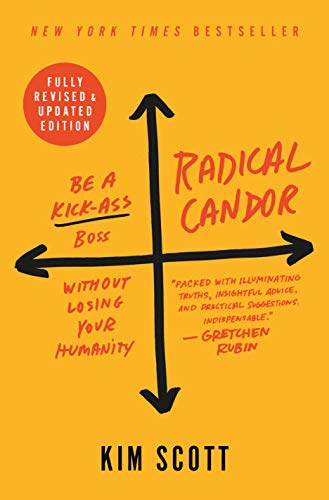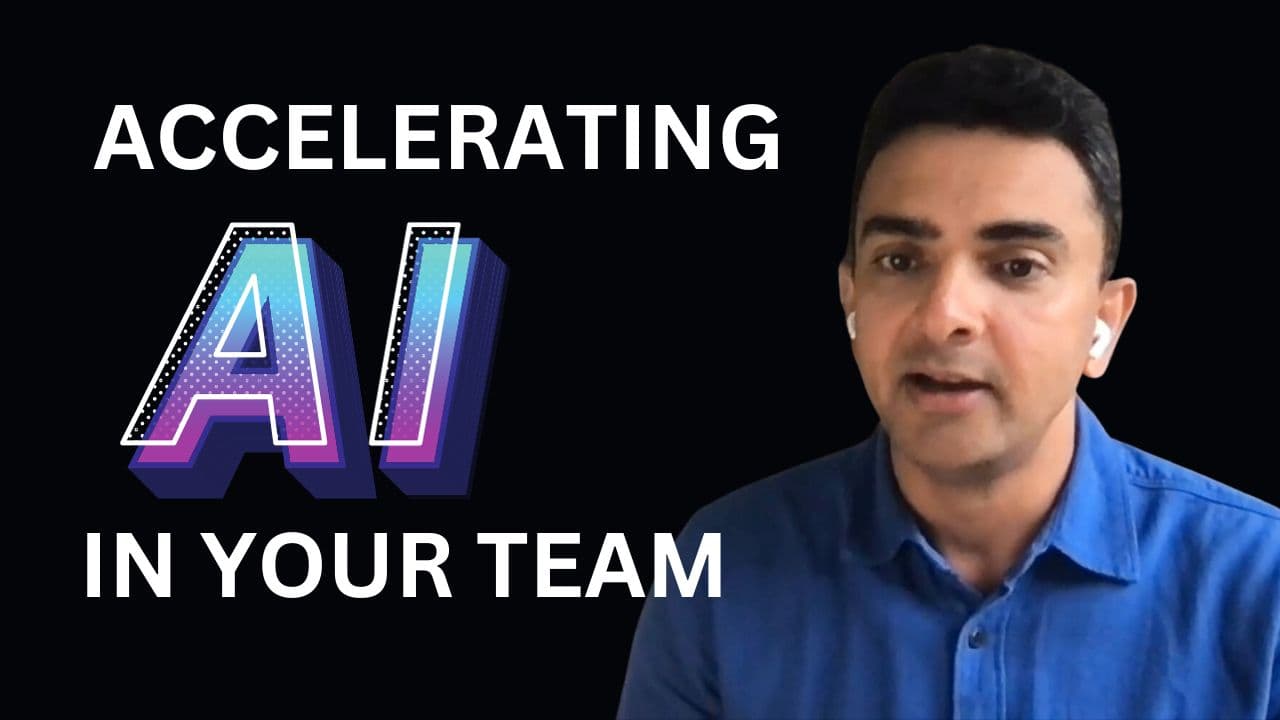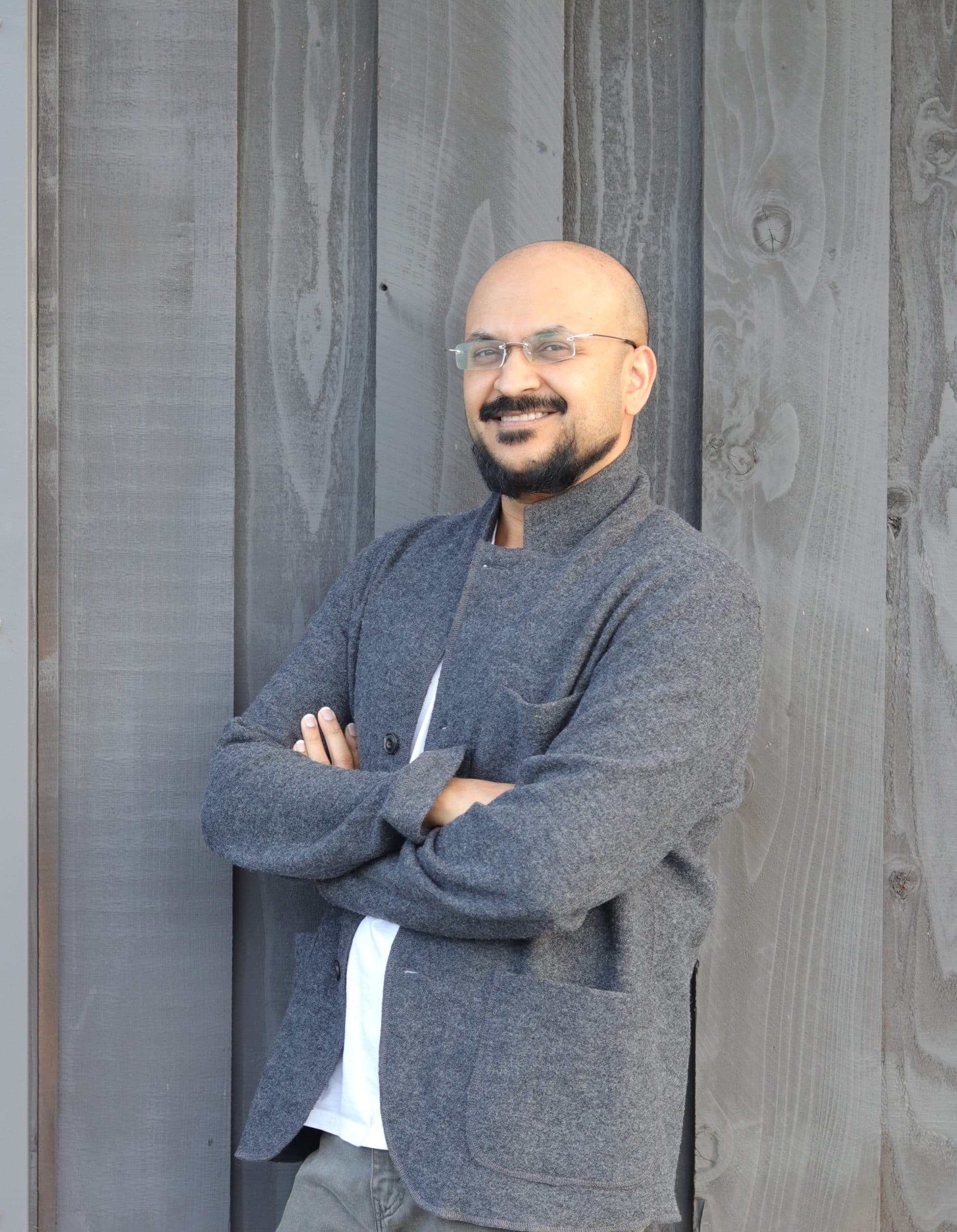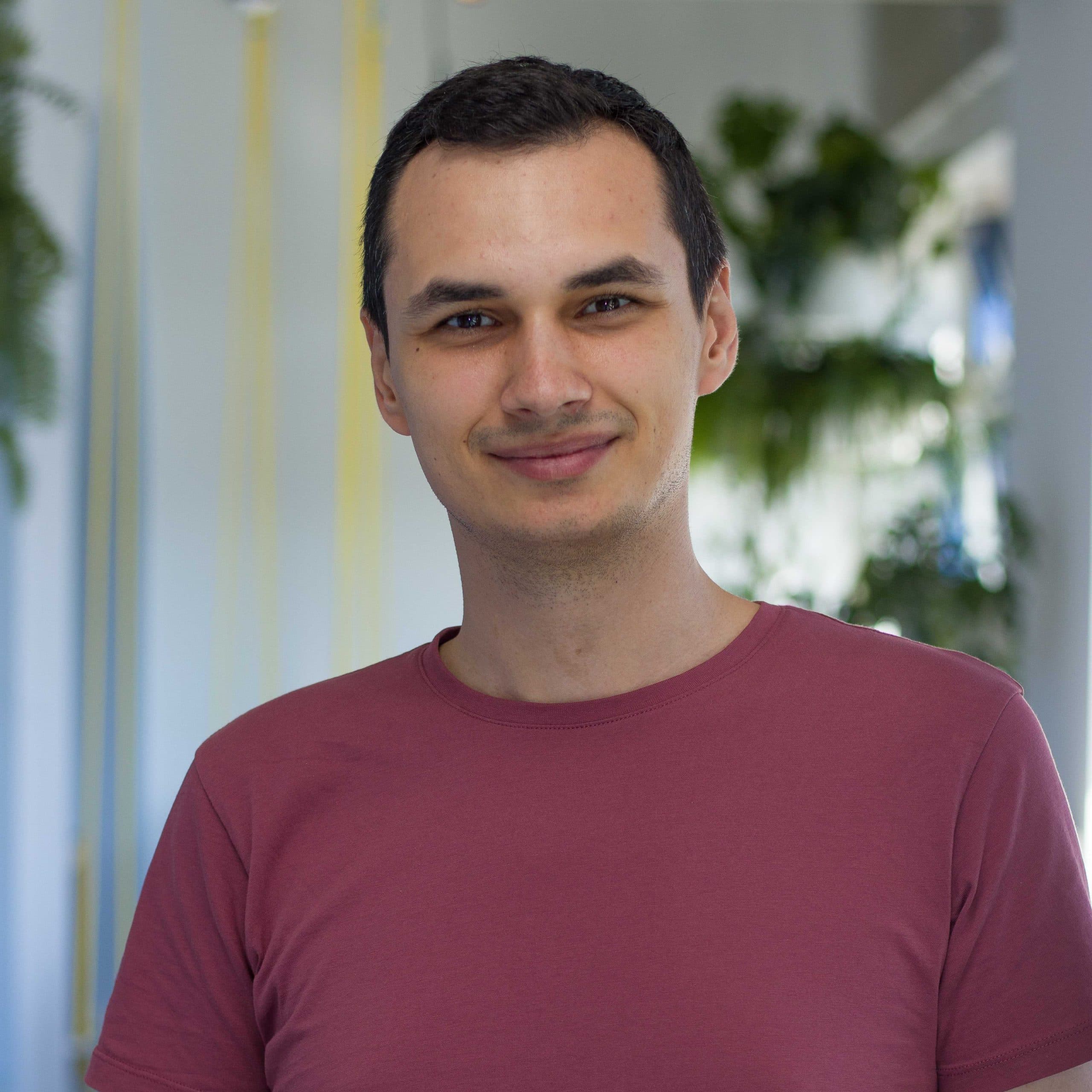Engineering Management Lessons — Learn to be a great Engineering Leader with Anand Safi
Published on Jun 20, 2022
29 min read
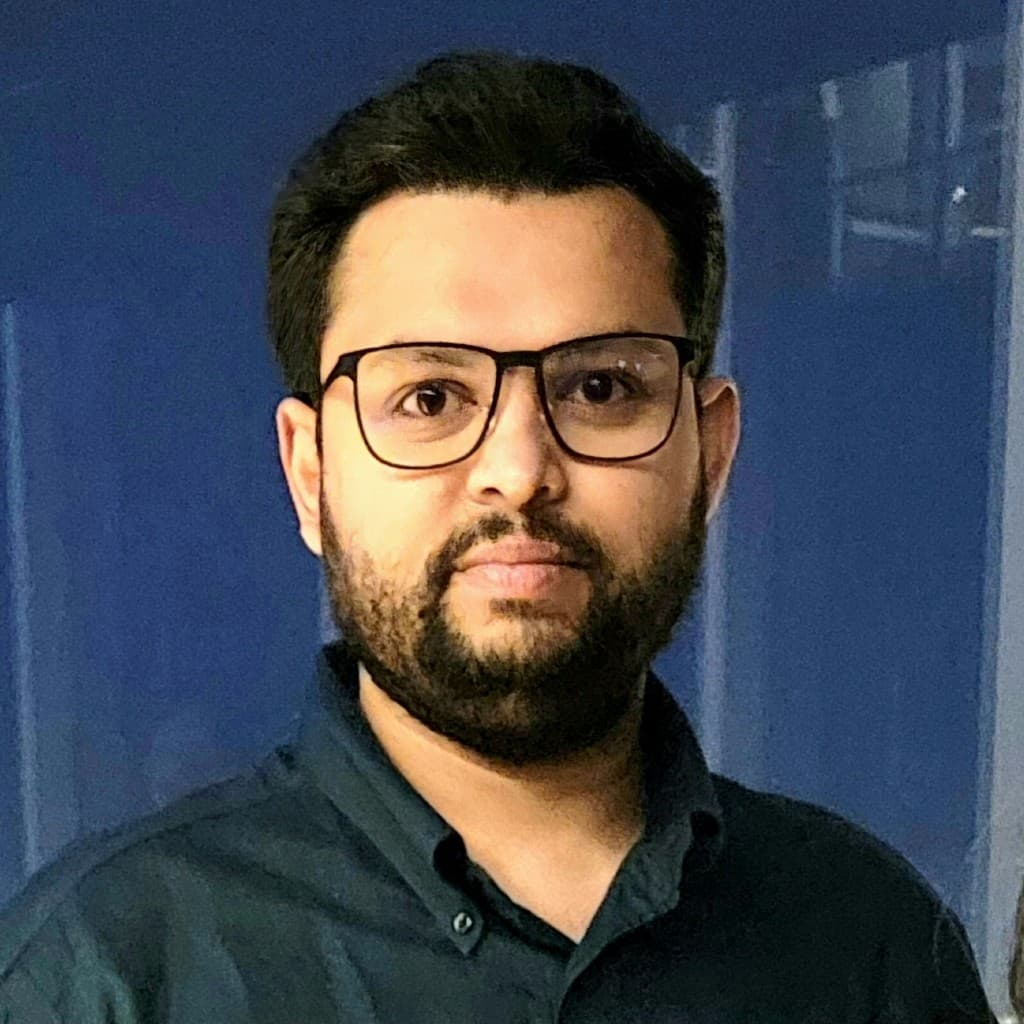
Learn to be a great engineering leader. This week I speak with Anand Safi, Director of Engineering at Mark43, Advisory Board Member, Mentor & Coach. We talk about what is important to look for in hiring, the importance of having a routine and themes for the day, strategy, ruthless prioritization, focussing on people’s strengths, and more.
Transcript
[00:00] Vidal: Good morning today. I have with me, Anand Safi. Um, Welcome to the ManagersClub.
[00:07] Anand: Thank you so much for having me here. Great to be here. Likewise.
Table of Contents
Toggle
- What’s your background, and how did you get into management?
- What are the biggest challenges you face as an engineering leader?
- Could you share with us a lesson you learned as an engineering leader?
- Hiring is an important function of management. What is your approach to hiring?
- What’s your advice for managers who are just starting out?
- What’s your workday like, and how do you manage your time, emails, calendar, etc.?
- What’s a personal habit contributing to your success as an engineering leader?
- Can you share an internet resource, app, or tool that helps you as a manager?
- If you could recommend one book to managers, what would it be and why?
- As a manager, what is your approach to developing & leveling up members of your team?
- What does it take to be a great engineering leader?
- Where can we go to learn more about you?
- Resources
What’s your background, and how did you get into management?
[00:12] Vidal: Start with a little bit about your background and how did you get into management?
[00:16] Anand: Uh, sure. So I do have a pretty kind of conventional background that is doing my bachelor’s and master’s in computer science.
So at something to do with technology from the start, um, I started working at eBay as a SDET post my masters, um, and, uh, or the kind of past 10 years, I moved from various roles from SDET to being a software engineer, to a full-stack engineer, to kind of a senior engineer and tech lead. Uh, And I work at various companies, right?
Like working at eBay, super enterprise, a lot of processes to working for six and a half years at a startup in New York, uh, series C backed around 25 people when I joined. Um, and when I left, it was 180. So I was kind of experienced the best of both worlds. Three, three and a half years back, I was at this critical crossroads as probably most engineers are.
Um, okay. I’m a tech leader, senior engineer now, should I pursue my technical IC track and move to as a staff or principal engineer role or like an architect versus kind of more into leadership and management. And, um, it was kind of where I would like to make the point that. For me, it was intentional. Uh, it’s not the case for most folks, but I am okay to say openly, like I always wanted to be in the leadership and management track.
So maybe I had it easy if people might, that track has not been easy, but the move was just kind of intentional and easy. Cause even in my IC days, I’ve always been kind of a little bit more collaborative, a little bit more customer focused, working closer with product and design leading kind of a bunch of things.
Or cultural initiatives and all those things. So just trying to be, I would say, embedded in the entire product development life cycle versus headstone implementation engineering time. Um, I was lucky to get the support and kind of mentorship of. Superiors and managers actually to support kind of that, uh, career as an engineer.
And that really helped me transition to management much easily around, I would say three and a half years back. Okay. Yeah. So
[02:22] Vidal: that is an interesting thing about an engineering manager. Sometimes you have to, you know, be. Project manager, the product manager, the scrum master. You have to take on a bunch of stuff that just an IC wouldn’t do.
What are the biggest challenges you face as an engineering leader?
Uh, could you say maybe now, what are some of the biggest challenges you face as an engineering leader?
[02:42] Anand: Yeah, I would say the first thing is. Biggest challenge is how quickly you are proven wrong in terms of your perception of the role and day-to-day responsibilities. Actually, back then, I did have just kind of a little bit more traditional mindset, right?
Like I’m going into a managerial role, little bit more kind of authority, just a little bit more delegation, just a higher compensation, right? Yeah. Again, I have no shame animating like as a junior young engineer, that’s what I thought that it will all will come to me. But since I moved into the role, like my challenges are, the focus has been continuing to build and maintain trust, uh, with kind of my peers and, and within the folks in my team actually, uh, employee morale and retention has been a big theme for the past couple of years.
Um, uh, but I would say the main thing that has kind of stood the test of time on still continues to exist is the bi-directional flow of information and transparency actually you’re in this unique are not so great at times, middle management, frontline management role, you know, that the exact team is working on strategy prioritization roadmap, but there is no clarity because it’s always ever-changing right.
It’s not like you can decide once and it’s kind of done. You need to revisit it and. At the same time, I want to be honest with my team, my direct reports and give them clarity on exactly what is calming or what is going on. So trying to find that balance has really been challenging in terms of mastering that, that kind of art, uh, in terms of when it’s okay to say a lot. And when it’s not okay to say a lot, actually, depending on the situation.
[04:27] Vidal: Um, so interesting. I agree with you. A lot of ICs really have no idea what managers do, right. And so it’s a big surprise.
I’m maybe going to dig in a little bit more on this challenge because yes, engineering managers, they have access to a lot of information and I too want to be transparent, but sometimes there’s things you can’t say or shouldn’t say, or you have to own a message that maybe you don’t a hundred percent personally agree with.
Do you have, do you have any. Okay. Could you say anything more specifically about any advice on this?
[04:57] Anand: Yeah, it’s the real practical example, right? Before revealing too much details that people kind of at my current role might know it’s around org strategy, right? Like you need to have one kind of focus in the present in terms of delivering against your set commitment. That’s where the technical project management, the idle rituals and those delivery pieces come in but really in order to truly kind of progress and kind of grow as an engineering manager to an engineering leader is where you start focusing on the forward-thinking stuff.
Right? How does what my team does apply at kind of the org skill? Is there something more generic? Actually, can we look at something. Uh, that kind of can help benefit us two quarters down the road. So that strategy thing, and, and that’s kind of been my focus for the last year growing into that has been really, uh, interesting where the challenge has come because strategy is fluid actually first it’s, it’s really hard to find that right audience every time.
Uh, so I basically was tasked with kind of finding a strategy for we’re kind of mobile-first, a landscape in the company. Started with a group of people over time. I realized, okay, now I think I need these people as well. And we’re growing stakeholder and audience kept on changing actually, because at times, um, at first nobody was kind of interested or kind of knew what this will shape out to be.
But as soon as I put the first draft version out, suddenly everybody got interested in kind of red flags started coming. People had a bunch of questions. I started getting Slack messages and everything, and then kind of went okay. That was challenging in terms of. How do I can wait something to people that is half-baked while I still kind of am trying to get the entire landscape on how we approach this at a company or org level, actually, because it’s not that I want to enforce my own opinion with limited experience like this needs to be a group thing.
And that group discussion is hard to reach consensus when we are so many talented people and healthy discussions ongoing, actually. So that was kind of challenging where I had to kind of work with my exact team in terms of what their vision was, try to match into an actionable and execute simple strategy.
And at the same time, communicate to my peers and kind of my teams on how it might impact or how we might rethink while giving them psychological safety there, nothing against kind of our current set goals and deliverables in that regards. Wow.
Could you share with us a lesson you learned as an engineering leader?
[07:27] Vidal: All right. Could you share with us a lesson you’ve learned as an engineering manager over the years?
[00:07:34] Anand: Yeah, I think. The first one I will say is related to the point that I just said that is like, you need to trust the process. Um, and kind of helps a lot of self-belief that clarity, clarity will ultimately prevail. Uh, I got flustered a little bit at times, right. Because I was new to these kinds of situations.
I often thought it’s been a month. I’ve been tiptoeing or going through circles. We’re coming back to square one. But, uh, I knew like there was. A lot more to kind of just having just a conversation. There are things that the kind of other leaders are kind of the overall leadership, senior leadership team needs to think through.
You need to weigh options. You need to kind of look at things strategically from a budgeting standpoint, a lot goes into kind of just. Advocating for something you believe in versus for the wider leadership team to make it happen for everyone who wants something they believe in actually. So that trusting the process and then clarity will prevail is important.
Uh, just kind of seeing the good side of this entire approach. And the second thing personally, as an engineering leader that I think I’ve learned, is, um, it’s difficult for me too. Kind of in real time? No, that when I need to be a buddy or when I kind of need to be a manager, right. I try to have a super casual kind of buddy-like one-on-one approach.
But then at times, it hinders kind of my being a manager. And when I can’t, you need to. And for some discipline or rigor kind of in, in either some work they’re doing or just kind of bringing them back to kind of alignment actually, or for my reports, or if I’m trying to be too managerial and kind of just being too formal, I cannot work with them and kind of have a genuine interest in connection with them and they would simply.
Do whatever I tell, tell them or what we kind of set as goals for the sake of it, but they would not put their heart and soul into it. Right. Like they would not kind of go above and beyond. So for me, just that balance is a lesson learned in terms of just trying to analyze kind of each situation or conversation on which hat, I need to wear in this conversation, uh, to make kind of the most valuable outcome for the team.
[00:09:46] Vidal: I think that’s a great challenge and it is a very fine line to walk, but I think only really comes with some experience, you know, like when, you know, you can, because you’re not their friend. Right. But you want to be friendly. And so how do you balance, you know, being friendly, being managerial? Um, yeah, I think that’s, that’s a great one.
Hiring is an important function of management. What is your approach to hiring?
What is your approach to hiring? Especially these days? The job market is pretty hot.
[00:10:15] Anand: Yeah, I think this answer is probably not changed, but evolved a lot in the past two years. Now, the approach to hiring is be genuinely interested in, in the talent. That’s kind of where we’re changing, but then the talent that you want to bring in, actually, rather than just getting the first person in the door that going out of the days where it just kind of, the highest paying person makes the most sense.
Actually, there is just the thought prevailing currently with this great resignation, uh, phenomenon, or maybe the great realization phenomenon, however people put it actually. But for, for me, approach to hiring as hiring manager personally is, um, having a discipline and kind of set routine naturally, right?
Uh, that the times where I’ve struggled is when I needed to, uh, really bring someone when I taught, like the team needs it. I would kind of spend an entire week going through resumes, setting up hiring manager calls and just doing it. And then. The remaining kind of three weeks, I would not even look at the backlog that is piling up.
Right. If a role is open, I am trying to get into a routine of spending a fixed amount of time every week to keep the pipeline kind of flowing and the PR and kind of the process rolling. And that’s kind of how I learned. Really growing, also working with my recruiting and people ops team internal, what benefits stem, because there’s a huge component on how it impacts their work and productivity based on how hiring managers handle their own kind of hiring backlog and just advocacy actually.
So that’s just in terms of just scouting or just kind of getting candidates. Uh, in, uh, four interviews in terms of interviews, actually, I have also just kind of, my personal approach is to, I know we want to just find the exact match. Some companies are our teams do it to the level of the exact language you used or kind of what challenges you yourself.
But I learned to think more holistically, right? As we. Kind of going through or design changes over the years, or like different team typologies or just kind of expanding on just kind of how we might structure teams. I think. This is my current team, but what might be future state six months from now?
And can this skill help, if not now, then some something where we want to head towards actually. So thinking more holistically first for my team, if not for a more general fit for any other team, actually.
And then in final, like during my hiring manager interviews, my approach. Always starting with just trying to not sell them, but kind of just educate them on what the mission of the company is and what my team plans to completion, why we were looking on this role.
Like the interview goes both ways. Many people are maybe too introverted or shy to even ask for that. I make sure that. Genuinely creating interest and kind of making sure that I can kind of just, um, I would say present the role and the team to them, uh, in the sense actually, and then always being able to label for any offline or after QA.
I’ve had a few emails after with candidates through LinkedIn messages. Um, in that science and we do a values alignment interview here, which is really special for me actually, because I’m on the culture task force here. And that’s also like just in hiring, having some form of values-related conversation embedded again, both ways, um, is, is really important as well.
[00:13:39] Vidal: I think that’s nice that you’re at the beginning, you’re even trying to sell the position. Right? Cause I think some hiring managers, they wait until the end of the interview to try to sell it. That’s really nice.
[00:13:50] Anand: Not today. I can, as I say, read, I am a senior am going towards a director manager of managers, leading teams.
When I lead divisions in a few years, I might not be able to do that. So a lot of what I’m saying applies to the newer managers, like two to five years in their management career. Yeah. I see.
[00:14:08] Vidal: Well, speaking of newer managers, what would be your advice for managers who are just starting out?
What’s your advice for managers who are just starting out?
[00:14:16] Anand: Something that I feel work as my strength is from day one I focused on and there’s no better way to put it up own your calendar. It can get quickly a kind of a jungle gym actually just can go sideways just in terms of, uh, new conversations, introductions, coffee chats, clarification, many, many admin, non admin strategy, brainstorm team one-on-one lot of things that can crop up.

Photo by Gaining Visuals on Unsplash
So really trying to kind of boundaries and expectations in terms of this is my focus time. This is my IC time as a manager, that could be a conversation itself as a manager, you would probably also need some individual contributor time, but that contribution is more on the strategy and kind of the engineering org initiatives in that regard.
So that’s own kind of your calendar is a number one advice. The second is focus your first 90 days a lot. Relationship building, not only with your team and direct reports, but kind of across your peer network and kind of even outside of your discipline, right. Product and design, kind of, I almost see as the two other pillars to kind of roll forward a team.
And for me, it was really important that I was in sync from day one and trying to build trust and kind of share what I believed in and kind of just understand where they were coming from for kind of any, uh, problem that we were trying to solve. So. This kind of relates to the point that you’ll soon realize in a few months that it can get really lonely for lack of a better phrase in the position you are in actually of, especially coming from the IC role before, like within, within the last few years.
So that is really important because other people are also going through similar kind of. Uh, learning moments in their own teams. So that is really important to have a strong support network, not only within engineering, but also product design. Uh, this last one is, um, find ways to measure on whether you are.
Kind of getting the desired outcome out of your team from your role in the first 90 days. Right? So whether it’s giving and receiving feedback, whether there is some kind of KPIs or metrics, however you prefer, but there is an opportunity and, and many people I’ve seen do that within the first three months, six months, one year.
There is always an opportunity to course, correct. People do realize day in, day out that we tried management. I liked it. Didn’t love it actually. And then they go back to their IC role in that sense. Right? So it’s a safe space with a minimal Australia’s in kind of the first three to six months where you can see if this is really for you, once you understand the full kind of extent of your role.
Um, and then really. Kind of have an honest conversation on whether you want to continue, like just making it work or keeping the lights on approach is not good for management really, really need to be passionate enough to up to some degree and kind of really want to do it wholeheartedly rather than being made to do it just as another job.
[17:17] Vidal: I see. Okay. You mentioned. Owning your calendar as, as an advice for new managers, um, I’m always interested in how people manage all the things you have to do, their calendar emails, et cetera. Do you have any other, uh, advice on this topic?
What’s your workday like, and how do you manage your time, emails, calendar, etc.?
[00:17:36] Anand: Yeah, so I just do, there are hundreds of articles, resources on all these productivity, hacks, tips, tricks, all these things.
Personally, what works for me is trying to have set days one or two major themes. So, uh, because of kind of how we have our company culture structured and kind of how we have our team structured. I have most company meetings on a Monday and Wednesday, actually. That’s kind of when we do our agile rituals at the start of the week, mid-week, check-ins actually are just kind of grooming for the next sprint a couple of days ahead to give them enough time to review.
So Mondays and Wednesdays, our team and org meeting heavy, we do our kind of all hands those days. Um, Thursdays is I reserved exclusively for one-on-ones. Uh, again can really depend on how people want to do it. People prefer one or two each day. Um, I probably am able to context switch, but I really prefer a single day when I’m in that only one-on-one zone.
And I would have 13 minutes of one-on-one. So it’s kind of 15 and it’s breathing room in between. And that’s kind of my one-on-one Thursdays, actually with my direct reports with my peers or kind of with my manager the VP or skip levels actually. Uh, and then Tuesdays and Fridays half of the days is purely focused time.
So it’s just that we do as a company, just one to 5:00 PM focus time, but still it leaves the calendar open for these ad hoc meetings and everything to just be internal brainstorm ideation, just kind of a problem in that regards. That’s the ideal. Um, it’s, it’s not that it’s always possible district to the ideal version, say I’m on on-call as an incident manager and there’s a P1 interrupt then.
Yeah. All of this go sideways in the sense, but that’s just kind of how I organize major theme for. The second theme thing I do is just kind of try to focus on the bigger action items at the start actually. So we have our core working hours in the company from 10:00 AM to 4:00 PM. So, uh, because that just gives like kind of more people who are in the PST zone or these kind of house start at seven or eight.
Uh, normally our main meeting start after 11. That for me being in the EST times. And it gives me the nine to 11 block, really focusing on the bigger action items at the start of the day, and then smaller action items, like a little kind of update the notes, or just do this thing or provide this link or a review of this document I can do throughout the day.
Pretty kind of easily between my meetings and, uh, in kind of my day itself, I tend to make sure that meetings are focused on a mix of kind of engineering times or some engineering round table discussions, technical architecture discussion. So maybe peer review sessions I see focused on that is focusing on strategy items or just kind of working on any org initiatives and then collaboration with.
Team and direct reports and those, so it’s, it’s a couple of teams, one team or two team a day, and then bigger action items that start off the day when there is really just a day of starting for most people.
[20:41] Vidal: I think that’s really nice how you structured your week and your day is to have particular themes. I think that’s really nice.
What’s a personal habit that you feel contributes to your success?
What’s a personal habit contributing to your success as an engineering leader?
[00:20:55] Anand: I think self-discipline and sticking to a routine, right? I’m not self-disciplined. Or indulging in say, uh, doing an action item or reviewing document, or just kind of doing that a routine as in, I probably tend to tend to stick to, like, at this point in the day, I would probably be focusing on one of these two things actually, uh, where it says kind of just going through all the 50 slack channels and the 500 notifications that are coming up, um, and all the kind of GIS remains.
So I definitely do that, but I have kind of some for of alerting and prioritization set up. Ruthless prioritization applies a lot in terms of personal routines. Uh, that, uh, and then the second thing I will say is I, I’m not sure there’s definitely multiple train of thought here, but I do believe for one in the to-do list, I actually use it.
Pen and paper is the classic way for me, I’ve tried a hundred tools, digital things here and there, just writing down and kind of just even post it. So I do believe in to-do lists. Right. And maybe that’s because from my IC days or something, I do like quantifiable kind of measurement at the end of the day because success in this role is very abstract in terms of management. So for me, making sure that if I had five teams or five items and three were kind of just big-ticket items that I wanted to cover, if I crossed out at least two or all three, that success for me at the end of the day, actually. So I do tend to kind of just make sure I have some mental, um, and probably just data-driven.

Photo by Glenn Carstens-Peters on Unsplash
Uh, I would say. Insight at the end of the day on whether I kind of was productive or not in that sense. Um, that’s basically it. And then actually also, yeah, the personal habit you set is proactive communication. 100%, like just, uh, I would not rather wait till that day or til the last minute to tell someone or just update on something.
If I know, come to north any information, as you said, like as manager, if I feel this should flow somewhere, I would rather flow it now rather than. Wait a day or a week, and then just kind of, they hear from somewhere else or the inflammation in itself changes all together, actually. So, all right.
[23:09] Vidal: Is there an internet resource app or tool that you really like that you find.
Can you share an internet resource, app, or tool that helps you as a manager?
[23:17] Anand: Uh, yeah, I, I think it’s probably, uh, on, in the social media side, it’s, it’s kind of the LinkedIn and Twitter in terms of more bite-size information and just, I have a huge, huge belief and, and value kind of gained as well as investment of my time and effort and kind of peer networking and just, uh, community, uh, practices.
So definitely LinkedIn and Twitter help me keep on top of that, uh, for more general items or just teams that are going on in the industry, right? Like the four-day work week or just two people are kind of having a tough time, just, uh, in terms of their current. Uh, roles and are always looking for the next thing.
So those industry themes really kind of helped me think of different perspectives. Like does it apply to my team or compete? If so, what are some other people doing to tackle it? Like, what do we need to do anything to tackle? Right. So that helps. There’s also like a slack community in terms of targeted peer communities.
Like there’s a lot of leadership, a couple of leadership, slack channels. That really helped me when I need to seek input. Uh, I at least know that I’m going to get level of credibility in terms of the answers and resources versus just scouting Google, and then land on any link. I am not sure like if that’s way outdated or does not apply in my context.
So that’s another thing. And then on YouTube, I follow Simon Sinek. I follow a bunch of things, but specifically assignment releases this bite-sized three to five minute videos actually. Um, and that really helped me stay current on turns out just how he portrays that. So again, it’s a very personal thing that I like and can live without when there’s a new video of that, because that really helps me incorporate that into my current teams.
And I found that to be successful. Right. I don’t follow from a philosophical sense, like, wow, this has profound and deep. I’ve found it to be often practical and kind of actionable. So that’s why I kind of just follow Simon Sinek
[25:11] Vidal: Simon Sinek’s really interesting. Yeah. He has some really good books too. Uh, maybe perhaps later if there’s some other YouTube channels or Twitter handles that you follow, you could send them and I’ll put them in the notes.
On the topic of books. If you could recommend one book to managers, what would it be and why?
If you could recommend one book to managers, what would it be and why?
[25:33] Anand: Yeah, I’ve, I’ve, I’m a big book person. I wish you said recommend five or 10, because I wouldn’t like to recommend a five or a 10, but I, I would say the one book.
Um, so. When I, when I’ve been asked this question, I really, it comes down for me to two books. Actually. I’ll say I’ll take the liberty of starting with two so that people can pick the one. So the first is Turn The Ship Around where I have really kind of maybe most people listening, know it already. So just, uh, I see that just applicable more and more as I kind of, uh, uh, get myself embedded into new roles, responsibilities and perspectives, actually.
And the second is again, similarly, a Radical Candor by Kim Scott. Again applies at multiple levels. I re-read it actually. And then I think now it applies kind of at all levels, right? Like up, down sideways, everywhere, actually. So I see that practicing a lot more, um, in that sense, right? How can you kind of just, if you’re going to perfect that art, you can any conversation, even if you’re entering a tough conversation with a customer or kind of a potential client or with a one-on-one who’s frustrated, you probably know that you can be authentic and they trust you that you will be authentic. And that kind of makes it easy. So being radically candid and, and kind of just having to practice that and something you said, right.
It comes with experience and the more you do it, it’s not going to be perfect the first few times. Um, it might come as negative. It might come as the sandwich method, right. Say something great. Put the negative stuff in and then wrap up with, oh, but you this great. Right. So there’s just kind of unique.
Constantly do it. And then over time, you’ll probably get slightly better with it. Actually,
[27:17] Vidal: those are both great books and I love turn the ship around with, uh, Captain Marquette. I was in the Navy and I just, I loved those. I loved those Navy military books like that. There’s so many good leadership.
[27:30] Anand: Navy seals are one of the most preferred kind of leadership principles like, uh, yeah.
I, I, I really kind of follow those principles and then read about them as well. Yeah. Yeah.
[00:27:40] Vidal: What is your approach to developing coaching leveling up members of your team?
As a manager, what is your approach to developing & leveling up members of your team?
[27:48] Anand: Yeah, I would probably end up say a couple of general things. Do from a practice standpoint, but the exact execution is very subjective that I realized, right.
I try to just kind of use the same talking points and I was seeing how differently that come across to people on, on varying degrees of interpretation and emotional kind of context to folks. So I think my approach has just been, trying to be kind of direct, direct, not in a bad way, but direct. And evidence-based actually, but trying to.
Share concrete examples. And that can come if I am genuinely interested in their kind of growth and just interested in, in, in their potential, uh, in that sense. So like just evidence-based versus just conceptually, actually, I just want to say like, oh, you could do this and that. Or, uh, I wish we could be better at documentation, but then if I examples on for this thing, we could document it or this one could have been better.
That kind of just brings them okay. I’m not simply talking castles in the air or just kind of saying something for the sake of it. Actually, I really want to convey something across. So evidence-based is important trying to something in terms of radical candor, trying to balance the positive and constructive.
Right. I had the habit early on insurance off. Praising a lot, like in terms of people and just kind of always seeing the positives and then the one-time, as I said, right? Like that buddy manager balance. The one time I had to get something constructive across, it was a hard conversation because they never thought like, oh, but you never told that this was a problem.
And now suddenly six months later you’re telling like, this is such a big deal on your end, actually. So I need, I was starting to be a lot more pragmatic and kind of balanced in my conversations on how I coach something where I, I say, This is a strength that we can leverage, but at the same time, this is what needs to be built upon in this sense, actually.
So no surprises, maybe in that sense, actually. And then, uh, one thing I’ll say is. I do tend to focus on people’s strengths a little bit more because they were hired for their strengths and talent, rather than always be critical that these are your weak areas and keep on improving. Right? If people are always going to be focusing on their weaknesses and they’re spending more than 50% of their time trying to do something where either they are not passionate about.
Are kind of, they don’t care or in the west yet. Um, then you kind of lose out on really gaining the value of what strengths they bring to the table. Right. So trying to also make sure that first we play to everyone’s strengths while at the same time having some form of goal that kind of just upskill stem in an area, they are interested.
That is really important. And so the coaching actually, and then, uh, the last one is. All that. I say it probably works for a session or two. At which point I need to seek active feedback. Is this message coming across, like probably anything that I can change or help, better support you. They’re trying to polish or kind of just evolve my own development and coaching style after kind of every month or two is really important in a subjective sense.
[31:03] Vidal: I think these are all really great. And I, I like your idea of, you know, focusing on people’s strengths, which is really good. Cause you say that’s what they were hired for, right?
Yeah. What does it take in your opinion to be a great engineering leader?
What does it take to be a great engineering leader?
[00:31:20] Anand: I think the main thing, which I written the article with the same title is, uh, keeping calm in chaos, emotional strength and resilience, just a lotta right. Uh it’s there are going to be, um, I would say unclear direction. There’s going to be unclear direction.
There are going to be war room situations. You’re going to be in that hot seat many times actually, or have tough conversations. People might look up to you in terms of a conflict or a deadlock on you, step in and kind of make a decision or choose a path. So keep calm and then kind of build the emotional strength because it can take a toll, right?
Like you are kind of just in a. But in terms of where people can and yourself also are really vulnerable and can open up in terms of just what people are going through personally and professionally, actually in that regards. So, uh, that is important. Uh, the other thing I say is like to become a great engineering leader or something I touched upon, um, at one of my earlier answers is some form of intrinsic motivation to begin with, right.
To be in this role and track just it’s really important that there is at least an area or two that really. Gives you pride and kind of satisfaction of being in this role or track that you see, right? Either that I really love growing and nurturing, right. Engineering talent and seeing them become great kind of talented.
Staff engineers or maybe future engineering leaders. Right. Maybe that’s what I like. I really like how I can work with a team and kind of drive towards the goal. And I really liked that part. Right. I play in kind of the messenger or just kind of the leader in general, taking the first step into China, your leap of faith.
So some aspect of intrinsic motivation is really important actually. Um, and then. One thing that I realized is also trying to be a little bit more strategic and solution-focused versus trying to be kind of just shortsighted and just kind of depending too much on where a customer or a group of customers might want to steer you or your team’s charter.
Actually, there is definitely, I’m not denying that there are short-term strategic moves that you absolutely need to make, but customer needs and wants and outlook is also ever-changing. So if you build simply at kind of the mercy of someone else’s perception, um, it can either kind of. They might want something different six months later, or it can probably not what the wider industry wants.
So something that what you care as a company and mission that you want to push out and can kind of advocate for is important at times, even more than you can, when someone else has an impression of what you should be doing as a team or as a company at…
[34:06] Vidal: I love these. Yes. Having the right motivation, you know, being in management for the right reasons.
I think. And I love this customer solution-focused, um, on N you’ve been really generous with your time. It’s been great to talk with you. Um, if people wanted to reach out to you later, learn more about you, maybe read some of your articles, what would be the best place?
Where can we go to learn more about you?
[34:32] Anand: I would just connect with me on LinkedIn or send me a message.
And from there, you’ll find the articles, the talks that I’ve been doing, there’s also link tree link, just kind of, I think a single. Bye off like many out links in terms of different articles or talks or videos. But I do take, uh, uh, kind of just on upon me to review every message or kind of know that comes on LinkedIn to see if there’s something that I can do or something that kind of somebody else in my network can do actually.
So I would absolutely love to connect with folks there. And then you’ll definitely find all the other things that I’ve been doing. And then. Through my LinkedIn as well.
[35:09] Vidal: All right. I’ll put a link to your profile. Wow.
[35:12] Anand: Awesome. Thank you.
[35:13] Vidal: Thank you for coming again. Great to talk with you.
[35:16] Anand: Same here.
